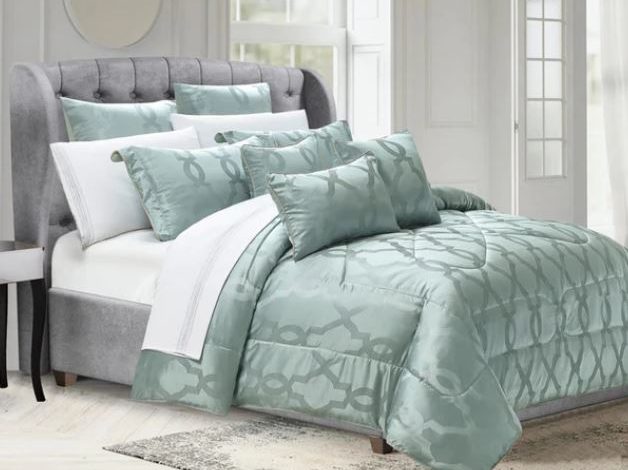Which duvet cover to choose?

We spend almost a third of our lives sleeping, so choosing the right duvet cover is essential. This article will give you all the cards to choose the ideal duvet cover for you.
How to choose the colour of a duvet cover?
The most important thing is that your duvet cover makes you feel comfortable, creating a pleasant and comforting atmosphere.
On the decoration side, you should know that the colour of your bed linen can impact the room’s general atmosphere.
If your room is spacious and bright:
Dark or bright colours would be perfect. On the other hand, they would not be suitable for a dark and small room (less than 9 square meters).
If your bedroom is small and dimly lit:
Choose a duvet cover in a light or natural colour. Neutral shades bring brightness and depth to the room. If the set is plain white, it will also be easier to clean since you can wash it at high temperature and chlorinate it.
What size duvet cover?
The size of the duvet cover depends on the size of your duvet since they must have the exact dimensions. To choose your duvet, you must worry about the size of your bed and the build of the people sleeping there.
Here is how to choose your duvet cover according to the dimensions of your bed:
- 90x190cm bed: 140x200cm or 200x200cm duvet cover
- 140x190cm bed: 200x200cm or 240x220cm duvet cover
- 160x200cm bed: 240x220cm or 260x240cm duvet cover
- 180x200cm bed: 260x240cm or 280x235cm duvet cover
- Double bed with two 80×200 mattresses: 240x220cm or 260x240cm duvet cover
Which duvet cover closure?
There are traditionally two types of duvet cover finishes on the French market: the bottle opening, also called chimney opening, and the button closure. Here’s what these finishes look like and what their benefits are:
Bottle:
The bottle is a typical French finish for duvet covers. This is a double-cut flap at the bottom of the duvet cover (1 front side flap split with the back side flap). The bottle is cut in arcs of circles on each side to be more aesthetic and to wedge the duvet well inside the cover. A bottle measures between 30 and 40 cm.
The bottle is usually slipped under the mattress to block the bed’s duvet, so it stays in place. It also makes it possible to fold the duvet well over the height of the mattress to keep the heat at the level of the feet.
This finish is ideal if you have a box spring that you do not want to hide.
Hidden buttons:
Duvet covers with hidden buttons consist of a buttonhole mounted on a double flap at the bottom of the duvet. Thus, after closing, the buttons are hidden between the two sides of the cover.
Garnier-Thiebaut uses this finish on specific designs placed to make the motif start from the foot of the cover, where a bottle would break the balance of the composition. Buttonholes are also a finish often used for export and 280×240 cm duvet covers. We make this finish with a button every 20 cm to ensure a perfect finish.
This finish makes it possible to have a nice fall of the duvet cover at the level of the foot of the bed and allows, if necessary, to hide an unsightly bed base.
Hidden zip:
We manufacture German duvet covers and pillowcases systematically made with hidden zips. It is a zipper hidden by a small flap. We use metal zips with flat heads to avoid extra thickness, which could cause problems during ironing (holes in the fabric and scratches on the iron’s soleplate).
The dimensions of the items affected by this finish are:
- Duvet covers: 135×200 cm, 155×220 cm
- -Pillowcases: 80×80 cm, 40×80 cm
We sometimes use invisible zips, especially on cushion covers. It is then the same type of zipping that we find in clothing with a very thin slider which is naturally camouflaged in the fabric.
The advantages of the zip finish are similar to those of the button finish.
Italian flap:
The Italian flap is for hotel-style duvet covers. This finish is similar to the bottle, but the Italian flap is a piece of fabric added to the bottom of the front of the duvet cover to hide the opening. It slips under the mattress like a bottle.




